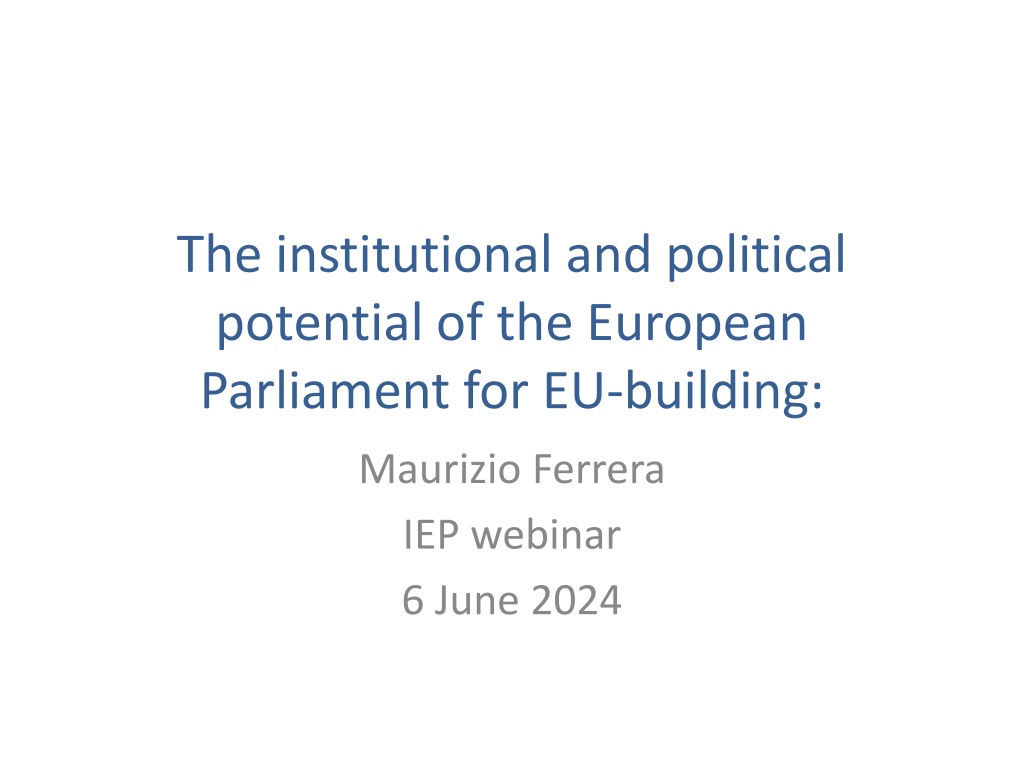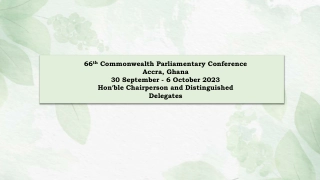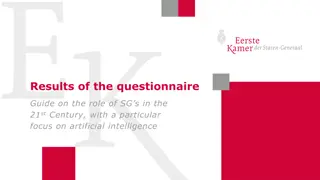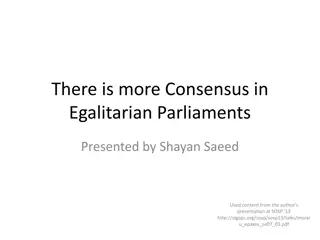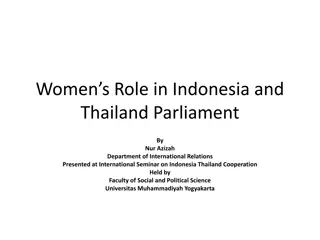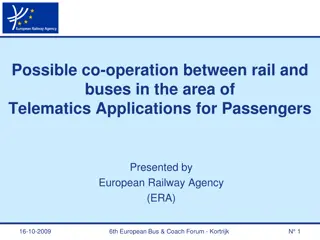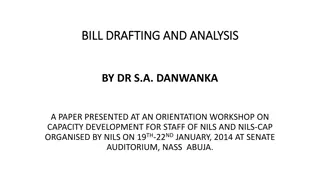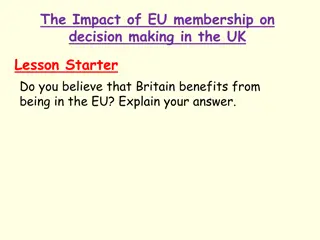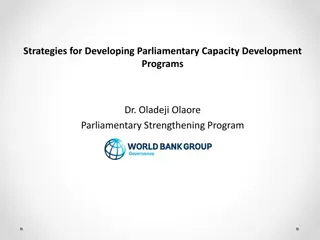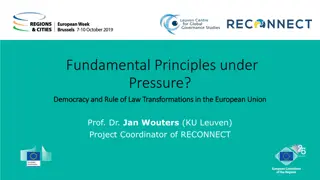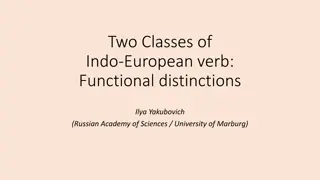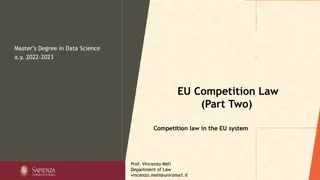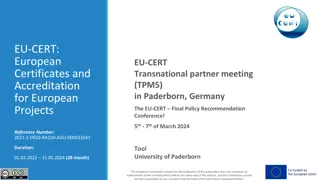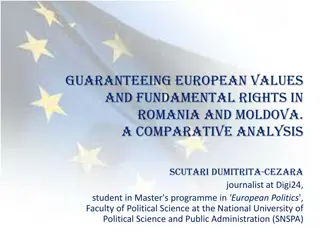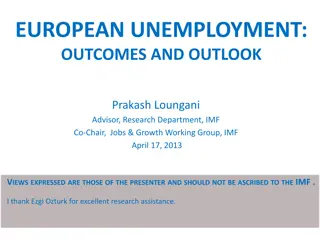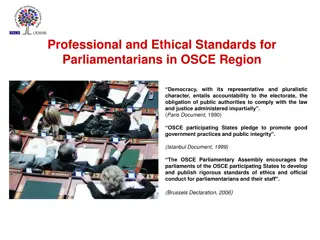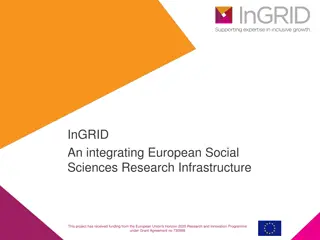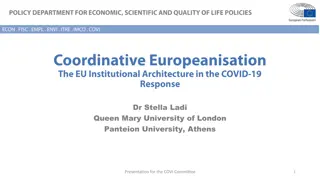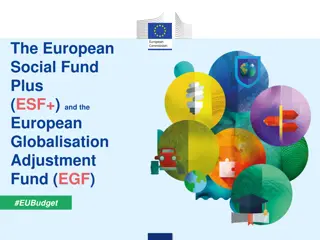The European Parliament's Role in EU-Building: Analysis and Perspectives
The European Parliament plays a crucial role in the EU decision-making process through co-legislation procedures and the election of the Commission President. Despite some weaknesses, it is gaining political salience and influence, serving as a key accountability body for EU leaders. The Parliament operates as a partisan institution, representing citizens and encouraging political conflict around substantive policy issues.
Download Presentation

Please find below an Image/Link to download the presentation.
The content on the website is provided AS IS for your information and personal use only. It may not be sold, licensed, or shared on other websites without obtaining consent from the author. Download presentation by click this link. If you encounter any issues during the download, it is possible that the publisher has removed the file from their server.
E N D
Presentation Transcript
The institutional and political potential of the European Parliament for EU-building: Maurizio Ferrera IEP webinar 6 June 2024
A co-legislator The codecision procedure (Council + Parliament) was introduced by the Maastricht Treaty (1992), and extended and made more effective by the Amsterdam Treaty (1999). With the Lisbon Treaty that took effect on 1 December 2009, the renamed ordinary legislative procedure became the main legislative procedure of the EU s decision-making system. Legislative measures must be approved by both Council and Parliament. It applies to around 85 policy areas.
A king co-maker In 2009 the Treaty of Lisbon introduced a new procedure for the formation of the Commission. According to Article 17(7) of the Treaty on European Union (TEU), the Commission President is elected by Parliament by a majority of the component Members in a process in which the European Council, acting by qualified majority and taking into account the elections to the European Parliament, proposes a candidate to the European Parliament. The Spitzenkandidaten is a political process requiring that, before the European elections, the European political parties designate the personality they would propose as President of the Commission or who could marshal a parliamentary majority. This personality would campaign in the Member States, presenting the political programme of their own political party. The lead candidate process aims at establishing a political link between Parliament and the executive.
Persisting weakness, but.. Despite advancements, still weaker institution compared with (European) Council E.g. marginal role in the euro-zone crisis OLP does not apply in key policy domains common foreign and defence policy, institutional reforms, tax policy, a fair share of social policies and a number of areas in the field of justice and home affairs Yet increasing political salience Go-to body for EU leaders: accountability Increasing exercise of voice: political influence
A partisan institution Only institution representing citizens Articulated in political groups, closely connected to euro-parties MEPS are elected through national party lists But then join a political group and are encouraged to vote based on party positions (rather than territorial affiliation)
An arena encouraging conflict funzionalization Conflicts revolve around substantive policy issues rather than territorial interests/identities They forge cross-national functional alliances which cut across territorial borders Activate a different political logic, more conducive to an ethos of togetherness (common belonging) than the territorial logic juxtaposing the member states against each other
Is it happening? Evidence of increasing partisanship in EP votes (especially within S&Ds) More differentiation of party manifestos Some convergence between national and euro-party manifestos Gradual normalisation of euro-sceptic parties (especially ERC: euro-realists)
The current alignments Less emphasis on pro-against Europe (including voice for exit) Persisting divide on constitutive issues (membership, competences, decision-making rules) Increasing differentiation based on issue- packages (left/right) Isomorphism (similar structure) between EU level and national issue packages (state vs market; immigration; green transition; welfare and citizenship rights etc.)
To watch Composition: Is there a EPP, S&D, Liberal majority (361 410) Coalition building to form majority (Greens, others?) Appointment of President by Council (QM) Negotiation between parliamentary groups and the appointed President (college members) Agenda for new mandate Impact on domestic partisan equilibria
